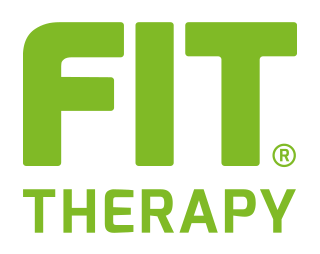- Home
- Low back pain
Low back pain

Low back pain
di FIT Therapy Technology Academy
What is low back pain?
Lumbago is a condition characterised by pain or discomfort occurring in the lower back, specifically in the lumbar region of the spine. Low back pain is common and can vary greatly in terms of severity, duration and underlying causes.
Causes of low back pain
Common causes of low back pain include:
- Muscle tension or strain: This is one of the most common reasons for low back pain, often caused by sudden movements, lifting heavy objects or poor posture.
- Spinal disc problems: herniated discs, degeneration of discs or prolapse of discs can cause pressure on spinal nerves, causing low back pain.
- Joint problems: Inflammation or deterioration of spinal joints, such as the facet joints, can cause low back pain.
- Spinal disorders: Conditions such as spinal stenosis (narrowing of the spinal canal), scoliosis or osteoarthritis can cause low back pain.
- Injury or trauma: Accidents, falls or trauma can cause damage to the back, leading to low back pain.
- Systemic diseases: Some systemic diseases, such as rheumatoid arthritis or kidney infection, may manifest as lower back pain.
- Lifestyles and risk factors: Obesity, smoking, lack of exercise and work involving heavy lifting or prolonged postures may increase the risk of developing low back pain.
Low back pain can be acute or chronic. Acute low back pain usually lasts less than 12 weeks and is often caused by recent trauma or exertion. Chronic low back pain persists for more than 12 weeks and is generally associated with more complex causes.La lombalgia cronica persiste per più di 12 settimane ed è generalmente associata a cause più complesse.
FIT Therapy Technology and treatment protocols.
The treatment of low back pain varies depending on the underlying cause and the severity of the pain. Often, rest, stretching exercises, physical therapy and pain medication can help improve the situation. In more severe cases or when pain persists, treatment may require more specialised approaches, including stronger drugs or surgery. It is important to consult a doctor for an accurate diagnosis and an appropriate treatment plan.
The treatment of low back pain depends on the underlying cause of the pain and its severity. Here are some common treatment options for low back pain:
- Rest: In many cases of acute low back pain, a short period of rest can help reduce the pain. However, it is important not to rest for too long, as prolonged immobility can weaken the muscles and worsen the situation.
- Medication: The doctor may prescribe medication for intense pain.
- Physiotherapy: Physiotherapy can be effective in the treatment of low back pain. A physiotherapist can develop a plan of targeted exercises and therapies to strengthen back muscles, improve posture and increase flexibility.
- Heat and cold therapy: Applying heat or cold to the lumbar region can reduce pain and inflammation. Heat can relax the muscles, while cold can reduce inflammation. It is important to follow the doctor’s or physiotherapist’s instructions for the correct use of heat and cold.
- Improving posture and lifestyle: Improving posture, adopting good ergonomic practices and maintaining a healthy weight can help prevent the recurrence of low back pain.
- Exercise: Regular physical activity, such as swimming, yoga or Pilates, can help strengthen back muscles and improve flexibility, reducing the risk of low back pain.
It is essential to consult a doctor or specialist to determine the exact cause of lower back pain and to develop a customised treatment plan. Furthermore, it is important to follow the instructions of the doctor and physiotherapist to achieve the best results in the treatment of low back pain.
Treatment method with FIT Therapy Lumbar Patch
The FIT Therapy Lumbar Patch can be used to treat painful events related to back problems such as arthritis, arthrosis or low back pain.
It turns out to be a natural alternative to using medication or heat-releasing devices.
Instructions for proper application (also watch the video tutorial):
- Remove the patch from the base.
- Apply the patch to the back and dry, clean, hair-free skin
- Wait about two minutes for better adhesion of the patch to the skin.
- Keep the patch applied for 5 days.
- Continue the therapy until an improvement in symptoms is observed.
The patch retains its function even when wet (e.g., during a shower).










